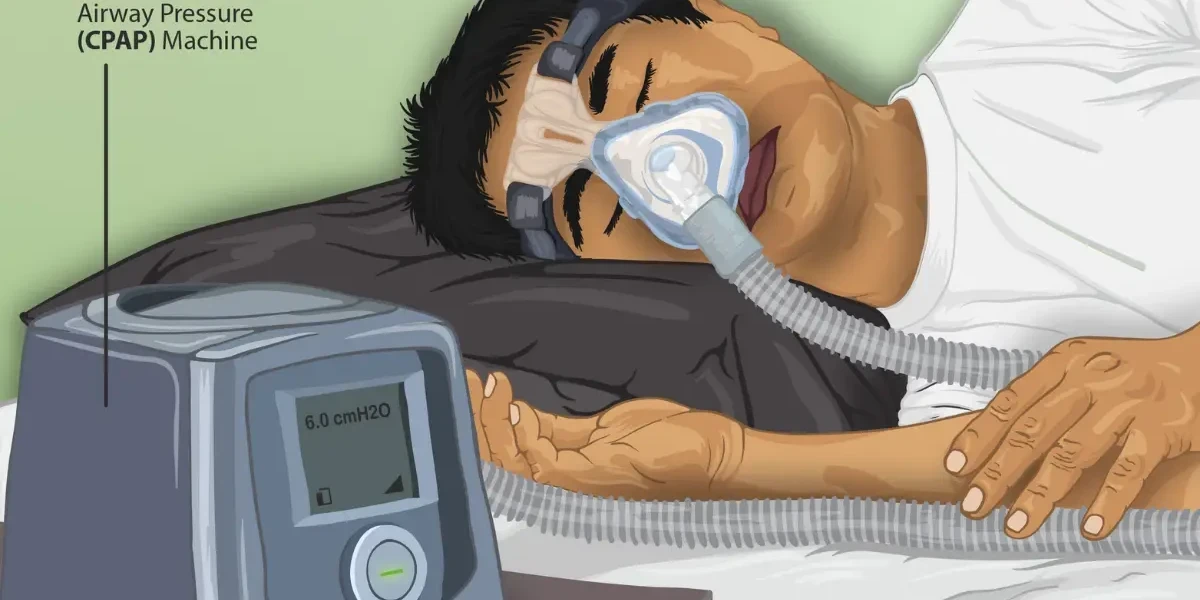Introduction
Cold Agglutinin Disease (CAD) is a rare but significant hematological disorder that falls under the category of autoimmune hemolytic anemias. This condition is characterized by the presence of cold agglutinins—antibodies that mistakenly target and destroy red blood cells (RBCs) at lower temperatures. These antibodies, typically of the IgM type, bind to RBCs when the body is exposed to cold environments, leading to agglutination (clumping) and subsequent hemolysis (destruction of RBCs). The impact of CAD on individuals can range from mild anemia to severe, life-threatening complications, making it a critical area of study within hematology. Understanding CAD is essential for developing effective treatments and improving the quality of life for those affected by this condition.
Understanding Cold Agglutinin Disease
Cold Agglutinin Disease (CAD) is an autoimmune disorder where the immune system produces antibodies that attack red blood cells at lower temperatures. This condition is primarily driven by the production of cold agglutinins, which are autoantibodies that bind to RBCs when the body is exposed to cold. The underlying mechanisms of CAD involve the immune system’s mistaken identification of RBCs as foreign invaders, leading to their destruction.
Mechanisms Leading to CAD
The primary mechanism behind CAD involves the production of IgM antibodies that target RBCs. These antibodies bind to the surface of RBCs at temperatures below 30°C (86°F), causing the cells to clump together. This agglutination triggers the complement system, a part of the immune system that enhances the ability to clear pathogens, leading to the destruction of the RBCs. The hemolysis primarily occurs in the liver and spleen, where the agglutinated RBCs are filtered out and destroyed.
Immune System’s Role
In CAD, the immune system’s production of cold agglutinins is often triggered by underlying conditions such as infections, certain cancers, or autoimmune diseases. For instance, infections like Mycoplasma pneumoniae or Epstein-Barr virus can stimulate the production of these antibodies. Additionally, lymphoproliferative disorders, such as lymphoma, are commonly associated with CAD. The chronic destruction of RBCs leads to anemia, which manifests as fatigue, pallor, and shortness of breath.
Hemolysis and Its Consequences
The hemolysis in CAD can be exacerbated by cold exposure, leading to increased symptoms during colder months. The destruction of RBCs results in the release of hemoglobin into the bloodstream, which can cause jaundice and dark urine. Chronic hemolysis can also lead to complications such as gallstones and an enlarged spleen. In severe cases, the rapid destruction of RBCs can overwhelm the body’s ability to produce new cells, leading to life-threatening anemia.
Causes and Risk Factors of Cold Agglutinin Disease
Cold Agglutinin Disease (CAD) can be classified into primary and secondary forms, each with distinct causes and risk factors Primary CAD occurs without any underlying condition and is often idiopathic, meaning its exact cause is unknown. However, it is believed to be related to genetic predispositions and spontaneous mutations in the immune system that lead to the production of cold agglutinins.
Secondary CAD is associated with other underlying conditions Infections are a significant risk factor, particularly those caused by Mycoplasma pneumoniae, Epstein-Barr virus, and cytomegalovirus. These infections can trigger the immune system to produce cold agglutinins as a response to the pathogens, which then mistakenly target red blood cells Autoimmune disorders such as systemic lupus erythematosus and rheumatoid arthritis are also linked to secondary CAD, as these conditions involve abnormal immune responses that can lead to the production of harmful antibodies.
Certain cancers, especially lymphoproliferative disorders like lymphoma and chronic lymphocytic leukemia, are known to increase the risk of developing CAD. These cancers affect the lymphatic system and can lead to the production of abnormal antibodies, including cold agglutinins. Additionally, age and gender are notable risk factors; CAD is more common in individuals over 60 and is twice as likely to affect women compared to men.
Understanding these causes and risk factors is crucial for early detection and management of CAD. By identifying individuals at higher risk, healthcare providers can monitor for symptoms and intervene promptly, potentially preventing severe complications.
Signs and Symptoms of Cold Agglutinin Disease
Recognizing the signs and symptoms of Cold Agglutinin Disease (CAD) is essential for early diagnosis and intervention Fatigue is one of the most common symptoms, resulting from the chronic anemia caused by the destruction of red blood cells. Individuals with CAD often experience pallor, or unusually pale skin, due to the reduced number of red blood cells circulating in the body.
Jaundice, characterized by yellowing of the skin and eyes, occurs when the breakdown of red blood cells releases bilirubin into the bloodstream. This symptom is often accompanied by dark urine, as excess bilirubin is excreted by the kidneys. Cold-induced symptoms are particularly notable in CAD. Exposure to cold temperatures can lead to acrocyanosis, a condition where the fingers, toes, ears, and nose turn blue or purple due to poor blood circulation. This can be painful and is often exacerbated by cold weather.
Other symptoms include shortness of breath and dizziness, which result from the body’s reduced capacity to transport oxygen due to anemia. Rapid heartbeat or palpitations may also occur as the heart works harder to pump oxygenated blood throughout the body. In severe cases, individuals may experience chest pain and heart failure due to the increased strain on the cardiovascular system.
Early recognition of these symptoms is vital for managing CAD effectively. If left untreated, the chronic hemolysis can lead to severe anemia and other complications. Therefore, individuals experiencing these symptoms, especially those with known risk factors, should seek medical evaluation promptly.
How Is Cold Agglutinin Disease Diagnosed?
Diagnosing Cold Agglutinin Disease (CAD) involves a comprehensive approach that includes a combination of blood tests, medical history review, and physical examinations. Blood Tests are crucial in detecting cold agglutinins, the antibodies responsible for the condition. The Direct Antiglobulin Test (DAT), also known as the Coombs test, is commonly used to identify these antibodies on the surface of red blood cells. Additionally, a Cold Agglutinin Titer test measures the concentration of cold agglutinins in the blood, providing further confirmation of the diagnosis.
Laboratory Evaluations play a significant role in diagnosing CAD. A Complete Blood Count (CBC) is performed to assess the levels of red blood cells, hemoglobin, and hematocrit, which are typically reduced in individuals with CAD due to hemolysis. Reticulocyte counts are also measured to evaluate the bone marrow’s response to anemia. Elevated levels of lactate dehydrogenase (LDH) and bilirubin indicate increased red blood cell destruction, while low haptoglobin levels suggest hemolysis.
Medical History is essential in diagnosing CAD. Healthcare providers will review the patient’s history of symptoms, including fatigue, pallor, jaundice, and cold-induced symptoms like acrocyanosis. They will also inquire about any recent infections, autoimmune disorders, or cancers, as these conditions can be associated with secondary CAD.
Physical Examinations are conducted to identify signs of anemia and poor blood circulation. During the examination, clinicians look for symptoms such as pale skin, jaundice, and acrocyanosis. They may also check for an enlarged spleen or liver, which can occur due to the increased workload of filtering damaged red blood cells.
By combining these diagnostic tools, healthcare providers can accurately diagnose CAD and differentiate it from other forms of hemolytic anemia. Early and correct detection is important for effectively controlling the condition and preventing complications.
Duration and Prognosis of Cold Agglutinin Disease
The duration and prognosis of Cold Agglutinin Disease (CAD) can vary widely among individuals, influenced by factors such as the underlying cause, severity of symptoms, and response to treatment Typical Duration of CAD can range from acute episodes triggered by infections to chronic conditions that persist over many years. In cases where CAD is secondary to an infection, symptoms may resolve once the infection is treated. However, primary CAD or CAD associated with chronic conditions like lymphoma may require long-term management.
Factors Influencing Prognosis include the patient’s age, overall health, and the presence of underlying conditions. Older adults and those with comorbidities may experience more severe symptoms and complications. The severity of hemolysis and the body’s ability to compensate by producing new red blood cells also play a role in determining the prognosis.
Chronic Management of CAD involves strategies to minimize cold exposure and manage symptoms. Patients are advised to keep warm, especially in cold weather, to prevent cold-induced hemolysis. Medications such as rituximab, which targets the B cells producing cold agglutinins, can be effective in reducing antibody levels and controlling symptoms. In severe cases, immunosuppressive therapies or plasmapheresis may be required to manage the condition.
Acute Episodes of CAD can occur during infections or cold exposure, leading to sudden increases in hemolysis and anemia. Prompt treatment of the underlying infection and supportive care, such as blood transfusions, may be necessary during these episodes.
Overall, the prognosis for individuals with CAD varies. While some may experience mild symptoms and lead relatively normal lives, others may face significant challenges requiring ongoing medical care. With appropriate management and monitoring, many individuals with CAD can achieve a good quality of life and maintain normal life expectancy.
Treatment and Medication Options for Cold Agglutinin Disease
Treating Cold Agglutinin Disease (CAD) involves a multifaceted approach tailored to the severity of the condition and the individual needs of the patient. Medications are a cornerstone of CAD management. Rituximab, a monoclonal antibody that targets B cells, is often the first-line treatment due to its effectiveness in reducing the production of cold agglutinins. In some cases, rituximab is combined with bendamustine, a chemotherapy drug, to enhance its efficacy. Corticosteroids, although commonly used in other autoimmune conditions, are generally not effective for CAD and are not recommended. Immunosuppressants like cyclophosphamide and fludarabine may be used in refractory cases to suppress the immune system and reduce antibody production.
Blood Transfusions are a critical supportive therapy for managing severe anemia in CAD patients. Transfusions help replenish red blood cells destroyed by hemolysis, improving oxygen delivery and alleviating symptoms such as fatigue and shortness of breath. However, transfusions are typically reserved for acute episodes or severe cases due to the risk of complications.
Supportive Therapies play a significant role in managing CAD symptoms and preventing complications. Keeping warm is essential to prevent cold-induced hemolysis. Patients are advised to avoid cold environments and use warm clothing and heated blankets during colder months. Plasmapheresis, a procedure that removes antibodies from the blood, can be used in severe cases to rapidly reduce cold agglutinin levels. Additionally, complement inhibitors like sutimlimab are emerging as promising treatments by targeting the complement pathway involved in hemolysis.
Overall, the treatment of CAD requires a personalized approach, combining medications, supportive therapies, and lifestyle modifications to manage symptoms and improve quality of life. Ongoing research continues to explore new therapeutic options to enhance patient outcomes.
Research and Statistics: How Many People Have CAD?
Cold Agglutinin Disease (CAD) is a rare condition, with current research indicating a prevalence of approximately 5 to 20 cases per million people. The incidence of CAD varies by region, with colder climates reporting higher rates due to the increased likelihood of cold-induced hemolysis. In the United States, it is estimated that between 300 and 3,000 individuals are living with CAD. The disease is most commonly diagnosed in individuals between the ages of 40 and 80, with a higher prevalence in females.
Ongoing Research is crucial for improving our understanding of CAD and developing more effective treatments. Recent studies have focused on the genetic and immunological mechanisms underlying the disease, aiming to identify new therapeutic targets. Research into the role of the complement system has led to the development of complement inhibitors like sutimlimab, which show promise in reducing hemolysis and improving patient outcomes. Additionally, clinical trials are exploring the efficacy of various drug combinations, such as rituximab with bendamustine, to determine the most effective treatment protocols.
Statistics on CAD highlight the importance of continued research and awareness. The rarity of the disease poses challenges for diagnosis and treatment, making it essential to educate healthcare providers and the public about CAD. Increased awareness can lead to earlier diagnosis and intervention, ultimately improving the prognosis for individuals with CAD.
Prevention Strategies for Cold Agglutinin Disease
Preventing Cold Agglutinin Disease (CAD) involves a combination of lifestyle modifications and awareness of triggers to manage the condition effectively. Lifestyle Modifications are crucial for individuals at risk of developing CAD. One of the most important strategies is to avoid exposure to cold temperatures, as cold environments can trigger hemolysis in individuals with CAD. This includes wearing warm clothing, especially in winter, and using heated blankets or warmers to maintain body temperature. Additionally, individuals should avoid consuming cold foods and beverages, as these can also induce symptoms.
Awareness of Triggers is essential for managing CAD. Patients should be educated about the importance of keeping warm and avoiding sudden temperature changes. For instance, moving from a warm indoor environment to a cold outdoor setting without adequate protection can precipitate symptoms. It is also advisable to avoid handling cold objects, such as ice or frozen foods, without protective gloves.
Regular Monitoring and medical check-ups are vital for individuals with CAD. Regular blood tests can help monitor hemoglobin levels and detect any signs of hemolysis early. Patients should also be aware of the symptoms of anemia, such as fatigue, pallor, and shortness of breath, and seek medical attention if these symptoms worsen.
Vaccinations can play a role in preventing infections that may trigger secondary CAD. For example, vaccinations against Mycoplasma pneumoniae and influenza can reduce the risk of infections that could exacerbate CAD.
Conclusion
In conclusion, Cold Agglutinin Disease (CAD) is a rare but significant autoimmune disorder that requires careful management and awareness. Understanding the causes, symptoms, and treatment options for CAD is crucial for improving patient outcomes. Early diagnosis through blood tests and medical history reviews can help identify the condition and initiate appropriate treatment strategies. Medications such as rituximab and supportive therapies like blood transfusions play a vital role in managing CAD symptoms and preventing complications.
Preventive strategies, including lifestyle modifications and awareness of triggers, are essential for individuals at risk of developing CAD. By avoiding cold exposure, maintaining a warm environment, and staying informed about potential triggers, patients can effectively manage their condition. Regular monitoring and medical check-ups are also important for detecting any changes in symptoms and ensuring timely intervention.
Awareness and understanding of CAD are key to reducing stigma and promoting inclusivity for individuals with this condition. Educating healthcare providers and the public about CAD can lead to earlier diagnosis and better management, ultimately improving the quality of life for those affected. Ongoing research into the genetic and immunological mechanisms of CAD continues to provide new insights and potential treatment options, offering hope for better outcomes in the future.
Encouraging readers to seek medical advice if they suspect symptoms of CAD and to stay informed about ongoing research and treatment options is vital. By fostering a supportive and informed community, we can enhance the lives of individuals with CAD and contribute to a more inclusive and compassionate society.
Frequently Asked Questions(FAQs)
| Question |
Answer |
| 01. What is the main cause of cold agglutinin? |
The main cause of cold agglutinin is the production of cold agglutinins, which are antibodies that target and cause the clumping of red blood cells at low temperatures. This can be triggered by infections, autoimmune disorders, or certain cancers. |
| 02. What is the best treatment for cold agglutinin disease? |
The best treatment for cold agglutinin disease often includes rituximab, a monoclonal antibody that targets B cells. Other treatments may include immunosuppressants, blood transfusions, and supportive therapies to manage symptoms. |
| 03. What are the diagnostic criteria for cold agglutinin disease? |
Diagnostic criteria for cold agglutinin disease include the presence of cold agglutinins in the blood, detected through tests like the Direct Antiglobulin Test (DAT) and Cold Agglutinin Titer test. Additional criteria include signs of hemolysis such as low hemoglobin, elevated bilirubin, and increased lactate dehydrogenase (LDH) levels. |
| 04. What are the causes of agglutination? |
Causes of agglutination include the presence of specific antibodies that bind to antigens on the surface of cells, leading to clumping. This can occur in blood transfusions with incompatible blood types, infections, and autoimmune diseases. |
| 05. What are the symptoms of agglutination? |
Symptoms of agglutination include fatigue, pallor, jaundice, dark urine, shortness of breath, and cold-induced symptoms like acrocyanosis (bluish discoloration of extremities). |
| 06. What diseases are diagnosed by agglutination? |
Diseases diagnosed by agglutination include Cold Agglutinin Disease, hemolytic anemias, and certain infections like Mycoplasma pneumoniae and Epstein-Barr virus. |
| 07. What blood types cause agglutination? |
Agglutination can occur when blood types are incompatible, such as when type A blood is mixed with type B blood, or when Rh-positive blood is given to an Rh-negative individual. |
| 08. What are 2 examples of agglutination? |
Two examples of agglutination are the clumping of red blood cells during a mismatched blood transfusion and the agglutination reaction used in blood typing tests. |
| 09. What is the agglutination test? |
The agglutination test is a laboratory method used to detect the presence of specific antibodies or antigens in a sample by observing the clumping of cells or particles. It is commonly used in blood typing and diagnosing infections. |













